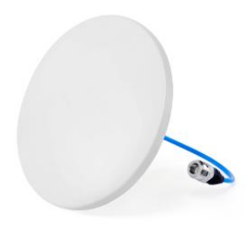Active, Passive, and Hybrid: DAS Explained

Building a network can make one feel like a first-time car buyer. Budget, performance, reliability, practicality, aesthetics, and more factor into the decision-making process. A sports car may seem fun and attractive, but not practical for a family of five. A compact may seem cost-efficient and reliable, but not useful for a construction company that needs to haul lumber and gravel. Similarly, building the right network relies on understanding technology options that best support your mission-critical use cases. Understanding the Distributed Antenna System (DAS) is essential in determining what network elements are right for your network.
A DAS is a network of antennas, usually in-building, that provides communications over a designated area and is different from a macro tower in that the macro is outdoor and has much higher power covering a wider area. A simple way to understand the difference between a macro tower and a DAS is to consider the difference between a fire hydrant and home faucets. The macro provides massive amounts of communications capability with high power over a large outdoor area like a hydrant that can supply massive amounts of water covering many properties with a firehose. The DAS provides more targeted coverage with lower power over a smaller area like faucets in a house supplying targeted amounts of water to sinks, tubs, showers, and so on. This example becomes a little more relevant when addressing why DAS is a better option than a macro site to provide indoor coverage – filling a washing machine with a firehose from the street, generally speaking, isn’t as good as connecting the machine to the utility faucet in the laundry room. Modern energy-efficient windows are designed to prevent sunlight, and subsequently radio signals, from entering a building, so designs to provide indoor coverage from outdoor sources are easily frustrated. Different types of DAS antennas can be placed in strategic locations in or around a facility to ensure devices receive the coverage and capacity they require. Different use cases and requirements have led to three basic types of DAS: Passive, Active, and Hybrid.
Understanding the definition of terms explains how the types of DAS are named. Passive equipment does not control the flow of electrons passing through them. Antennas, jumpers, splitters, and other passive devices simply allow electrons to flow through the path of least resistance. Active equipment controls electrons. Amplifiers, routers, fiber optics, and other active devices in some way change or control what an electron does to modify the signal passing through them.
Types of DAS
Subsequently, passive DAS connects a radio signal through passive equipment to distribute the signal across a facility or area. This type of DAS is lower cost and simple to design and deploy, but a drawback is some signal loss. Active DAS boosts and otherwise changes or retransmits signals through the facility or area and is much more complex to design and with more expensive equipment. Deployment costs are typically much higher since fiber optics are used, although an upside is stronger signal strength. A hybrid DAS is unsurprisingly a combination of passive and active DAS. Learn more about how your network can benefit with the right type of DAS.

